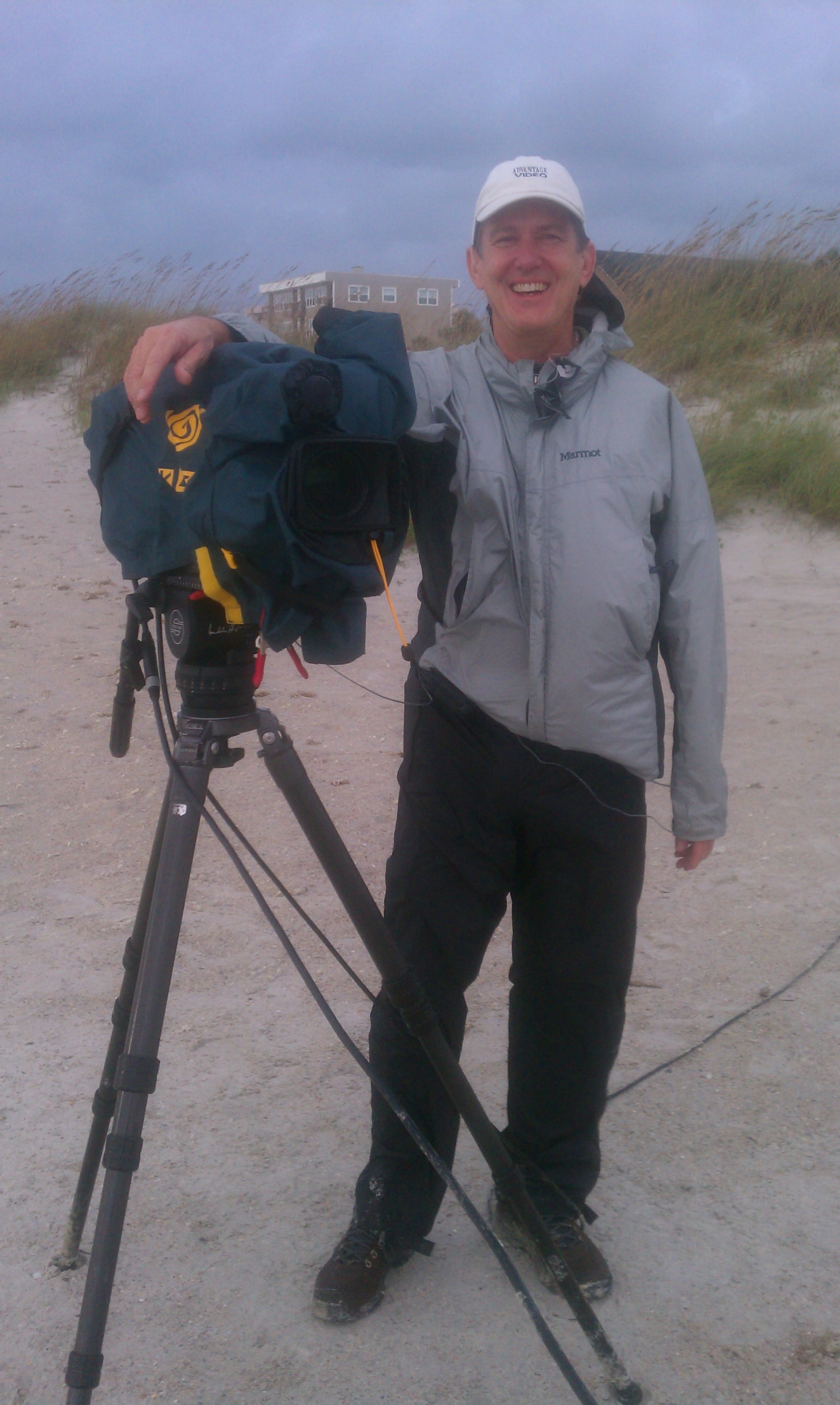< Back to all posts
10 Tips That Won’t Blow You Away
According to the National Weather Service Eastern Pacific hurricane season is May through November with the Atlantic season starting in June. Crews Control has been sending our video production crews into on-location at these hurricanes for decades. There are typically two types of shoots that our crews cover for any hurricane: live shots during the storm and aid relief videos.
Live Shot
The live shot is not for the faint of heart. When everybody else is leaving the threat of weather the production crew is driving into it. Live shots are requested by the networks and are accompanied by a satellite truck.
Covering the Aftermath
Shooting aid videos for future release requires heightened senses from the crew and a tender heart. The crews are often capture footage for large corporations and relief organizations proving aid to their customers and local citizens.
 We caught up with one of our seasoned hurricane DP’s and Florida resident Steve McMillan to give us his 10 tips for shooting in hurricane conditions. Steve has been shooting during and after hurricanes/ tropical storms for 15 years. He has covered hurricanes such as Floyd, Katrina and tropical storm Beryl to name a few. Steve has been sent from the Atlantic beaches of Melbourne to the Florida pan handle and everywhere in between. Here are some of his “now, why didn’t I think of that” ideas for Producers, Satellite crews, and video production teams.
We caught up with one of our seasoned hurricane DP’s and Florida resident Steve McMillan to give us his 10 tips for shooting in hurricane conditions. Steve has been shooting during and after hurricanes/ tropical storms for 15 years. He has covered hurricanes such as Floyd, Katrina and tropical storm Beryl to name a few. Steve has been sent from the Atlantic beaches of Melbourne to the Florida pan handle and everywhere in between. Here are some of his “now, why didn’t I think of that” ideas for Producers, Satellite crews, and video production teams.
TEN: Clean your gear. After everything is said and done your lights, tripod, stands, and grip gear will have sand and salt water in every nook and cranny. Make sure that you clean your gear with spring water and wipe off all excess water. Sea salt can do a number on your gear.
NINE: Stay dry. Invest in a good Gore-Tex rain suit for yourself, cheaper rain suits will not stand up to hurricane winds. Also, bring an extra pair of shoes so that your feet can stay dry after the live shot is over.
EIGHT: Provide extra protection for electronic gear. You will also need to keep your audio mixer and transmitters in Portabrace bags. A cooler on wheels is a good place to store extra batteries and microphones not in use. Of course, your camera needs to have a rain cover during live shots but it is also a good idea to put an additional waterproof cover over it while the camera is not in use. Steve uses an Ascend Pack Cover from Bass Pro Shops. A stick microphone is the best to do stand ups. Explain to the client that it will get wet and they may be billed for the ruined microphone.
SEVEN: Bring your own power. Steve carries an 800watt power inverter by Endurance to recharge batteries and power a small light from his production van.
SIX: Keep communication lines open. Always have extra phone batteries powered and ready. A LifeProof phone case is a waterproof case for iPhones which can be used for an IFB.
FIVE: Position your crew correctly. Use your hotel or location as a buffer from the wind for live satellite shots during the storm. For southern locations where the wind is blowing north locate yourselves on the south side of the building. For eastern locations where the wind is blowing west locate the crew on the west side of the building etc.
FOUR: Avoid the stink. Fill up your bathtub at the hotel with water and keep a bucket close by. This isn’t for drinking water. If the power goes out and you are no longer able to flush the toilet you will need the bucket of water to manually flush.
THREE: Arrange lodging ASAP. Make sure that you have reservations at a local hotel, don’t assume you will be able to get rooms once you arrive at the location. Try to get a room on the second or third floor. You don’t want to be on the ground floor in case of flooding but you also don’t want to be on the tenth floor if the power goes out. Then you will have to carry all your gear up and down ten flights of stairs.
TWO: Bring supplies from home. You will need to have water, food, and battery powered entertainment with you. There is a chance that you will need to park your van in a covered parking lot and wait out the storm. Make sure that you have enough water and power bars to stave off hunger. It is also important to keep yourself entertained, load your favorite devices with movies and keep around extra batteries to power those devices.
ONE: Gas up. Make sure that you calculate your mileage correctly from the nearest open gas station to the shoot location and back. Keep your travel around the disaster area to a minimum. GasBuddy is a website and iPhone App that is helpful to find gas stations in areas that are unfamiliar to you. Remember if you choose to carry fuel in your vehicle you may be a target to looters.
“Depending on the amount of travel, be sure to have a fully gassed up vehicle. Maybe even bring additional gas cans with you. I had a client who was shooting after a major storm and the gas stations were closed in the surrounding areas due to the extreme amount of damage. Since vans and sat trucks that drive into these locations burn a lot of fuel, you don’t want to get caught without the means of leaving a disaster area.” Says Crews Control Production Manager Becky Holzman.
Do you have any lessons learned from past extreme weather shoots? What additional tips would you share? Please comment and share your helpful tips, war stories, or funny anecdotes.







Leave a Reply